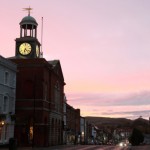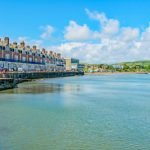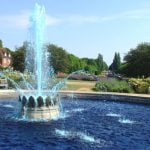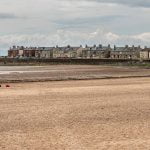A quick guide to Brighton and Hove
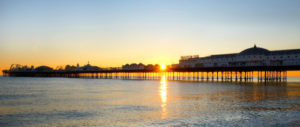
Brighton Palace Pier – one of the city’s most iconic landmark’s was opened in 1899
Brighton and Hove is a seaside resort and city in the county of East Sussex. The city was only formally created in 2001 from the formerly discrete towns of Brighton and Hove. The city is situated on the south coast of England, located some 47 miles (76 km) south of London. Brighton is perhaps best known for its diverse community and large LGBT population, giving it recognition as the unofficial gay capital of the UK. The population of Brighton and Hove at the last UK Census of 2011 was recorded as 273,369.
Brighton and Hove – A Fleeting History
Although there is archaeological evidence of a settlement in the Brighton area during the Bronze Age and Roman Era the first permanent community was not established until Saxon times. The Saxons landed in Sussex in the 5th century AD, founding the kingdom of Sussex, which included the village of Brighton. It was initially called Beorthelm’s village and inhabited by farmers and fishermen. The farmers lived in a settlement above a cliff, while the fishermen lived below the cliff, along the foreshore. In 1185, the first reference to Church of St Bartholomew in Brighton was recorded.
In 1313, Brighton was given a charter, which guaranteed its population certain rights. The village soon developed into a small but important market town, holding regular fish, pig and corn markets, as well as a number of fairs.
The small medieval town of Brighton consisted of only four roads, North Street, West Street, East Street and South Street. Around 1500, the fifth road of Middle Street was added to the town’s layout. Additionally, there were a number of fishermen’s huts along the shoreline.
In 1514, Brighton was all but razed to the ground by French naval forces, however, it was soon rebuilt. In 1545, the French attacked Brighton again, but this time they met resistance in the form of a volunteer army of locals, who sent them packing before any damage was done. By 1580, Brighton was home to around 400 fishermen and 100 farmers, with a total population of about 2,500 – a fairly large market town by standards of the day. In 1588, the town was fortified when ‘The blockhouse’ was built at the southern end of Middle Street.
By the late 17th century Brighton’s fishing industry was in decline. Due to England’s constant wars with the Dutch and French of the period, the town’s fishing operations were seriously hampered. Additionally, in 1703 and 1705, great storms struck Brighton, greatly damaging property and erosion of the coastline. These disasters meant that that population fell to around 1,500 in the early part of the 18th century. However, by the mid-18th century, Brighton’s fortunes were once again on the ‘up’. The recovery started in 1750 when a renowned doctor of the time, Richard Russell wrote a book claiming that bathing in seawater was good for health. That led to a trend for the London elite to seek out coastal locations, particularly Brighton, for rest and recuperation.
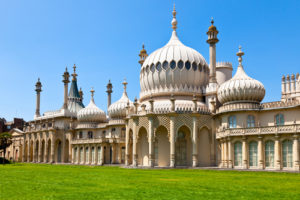
The rebuilt Brighton (aka Royal) Pavillion was opened in 1815
However, when the Prince of Wales, who later became the Prince Regent and then George IV, paid a visit to Brighton for the first time in 1783, it initiated a ‘boom time’ for the town in terms of tourism. In 1787, the original Brighton Pavilion was built to an oriental theme for the Prince Regent. However, in 1815, it was totally rebuilt to a design by famous architect John Nash, only this time in the style of an Indian Palace. In 1850, Brighton’s town council purchased the Pavilion for the local people. Meanwhile, Brighton’s population had risen from around 4,000 in the late 1780s to approximately 40,000 by 1841.
In 1841, with a growing population, Brighton was connected to the national railway network when a line was opened between the town and Victoria Station, London. The coming of the railway greatly improved Brighton’s connectivity and by 1848 the town had an estimated 250,000 annual visitors. However, the sea maritime industry has also been important to Brighton, with its first pier being opened in 1823. A steamship ferry service between Brighton and northern France was introduced the following year. The expansion of Brighton’s maritime facilities continued during the 19th century. In 1866, West Pier was built and in 1899 the construction of the Palace Pier was completed. Electric trams began running in the town in 1901, with the first motorised bus service starting in 1904.
Throughout the 20th century amenities in Brighton continued to improve. In the 1930s, work began clearing the town centre slums. In 1937, a new market was built in Circus Street. And, both a council and private house building programme began in earnest across the town.
In 1939, at the start of World War II, many schoolchildren were evacuated to Brighton from London to avoid German bombing. However, Brighton turned out not to be that safe after all, as there was a total of 56 bombing raids on city during the war. And, more than 5,000 houses were either damaged or destroyed.
Brighton and Hove – The Modern Era
After the Second World War, the town underwent a major regeneration programme. In the 1950s, a new industrial complex and a housing estate were built at Hollingbury. The construction of Brighton University was completed in 1962. The mid-1960s saw the completion of Churchill Square shopping centre. And, while West Pier closed in 1975, the Brighton Centre was opened in 1977, with the Black Rock Marina opening the following year.
In 1997, the discrete towns of Brighton and Hove were merged to form the unitary authority of Brighton and Hove. In 1998, the Churchill Square shopping which was extended and now features some 80 shops, with around 44,000 m2 of retail space. Other major retail areas include Western Road and London Road. The Lanes area, also an important asset to the city, forms a retail, leisure and residential area, near the seafront. The area is characterised by narrow roads and alleyways that follow the original street layout of the old fishing village of Brighton. The Lanes predominantly houses bespoke clothing stores, jewellers, antique shops, restaurants and pubs.
In 2000, the recently formed town of Brighton and Hove was granted city status by the Queen.
Getting There and Around Brighton and Hove!
By Road
Getting to Brighton by road is easy from any part of the country. Simply head to London from any part of the motorway network. When you reach the outskirts of London proceed along the M25 outer ring road until you reach the M23 exit. Proceed along the M23 towards Crawley, where the road changes to the A23. The distance from Crawley to Brighton along the A23 is approximately 22 miles.
By Bus
The main operators of bus services to Brighton are National Express and Megabus. Their buses arrive at Brighton’s centrally-located coach station, which is located on the seafront. Most services originate from London, so if you are travelling from other parts of the country you may have to transit through the capital.
By Train
To get to Brighton from most major cities in the UK, you will need to change trains in London. From there, Brighton central station is just an hour away. Most services are operated by Southern Rail. Preston Road and Hove stations, which are about a 30 minutes’ walk from the city centre, also operate direct services to London.
By Air
To get to Brighton by air is easy, as all of London’s three main airports; Heathrow, Gatwick and Stanstead, are within easy reach of the city. The most convenient airport to get to Brighton from is Gatwick, which is just half an hour away by train. National Express coaches also operate a service between Gatwick and Brighton, which takes around an hour.
Getting around!
Getting around Brighton is easy since the city centre is relatively small, the majority of places of interest can be accessed by foot. The Brighton & Hove Bus Company operates many routes around the city and its outskirts, with direct routes to all major attractions.
Famous people who live or lived in Brighton and Hove
Some of Brighton’s most famous residents of past and present include:
- Peter James – bestselling crime writer of the Roy Grace series of detective novels
- The Prince Regent – who later become George IV
- Nick Cave – renowned Australian musician, songwriter, author, actor and screenwriter moved to the city in the early 1980s
- Rudyard Kipling – world-renowned 19th-century author, poet and essayist
- Charles Dickens – world-renowned 19th-century author and essayist
- Chris Eubank – former professional boxer and holder of the world middleweight title
Did you know?
- On 4th July 1911, Brighton became the starting point for the first-ever recorded commercial flight
- In 1962, Britain’s first-ever casino was opened in Brighton at the Metropole Hotel
- Opening in 1872, Brighton Sea Life Centre on the seafront is the world’s oldest aquarium
- Adolf Hitler had planned to move into the Brighton Pavillion once he’d conquered Britain
- Opening in 1910, Brighton’s Duke of York theatre is the oldest purpose-built cinema in the UK
- In 1651, Charles II fled London in disguise to Brighton, before escaping to France
Things to see and do in Brighton and Hove!
There are absolutely loads of things to see and do in Brighton. Here are a few suggestions to be going on with:
- Brighton Palace Pier – Grade II-listed, stereotypical British seaside town pier, which features the usual arcade games, fairground rides and fish and chip shops, receives millions of visitors every year.
-
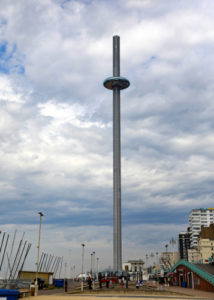
British Airways i360 162m tower www.shutterstock.com/g/tbarrat
The Lanes – A maze of 16th & 17th-century narrow streets and passageways housing an eclectic mix of independent food outlets and shops.
- Royal Pavilion – Brighton’s most famous landmark and the former palace of the Prince Regent is a Grade I-listed building designed by John Nash in the early 19th century. It also features an art gallery and impressive grounds.
- Brighton Sea Life Centre – is the world’s oldest operating aquarium. Opened in 1872, it features the original Victorian architecture and the usual exhibitions of live fish there are also interactive displays.
- British Airways i360 – located right on the seafront, a 531-ft (162 m) high observation tower with fantastic views over Brighton, across the South Downs, and the English Channel.
- Brighton Helicopter Ride – offers a personalised 20-minute flight over Brighton and Hove. Pre-book the ride for any day of the week for a maximum of 3 people.
- Brighton Centre – seafront exhibition centre and performance venue that features big-name comedy, music and theatre.
- Brighton Toy & Model Museum – exhibition and display of more than 10,000 items featuring toys and models from the last 100 years, including Dinky cars, Meccano kits, puppet theatres and one of the country’s best collection of model railways.
- Globalls – a golf course like no other! It offers a florescent crazy golf experience on the Jurassic Glo Golf and Tropical Glo Golf courses. And, if you’re feeling competitive you can challenge other golfers at the Crazy Golf Masters.
- Brighton Dome – a three-venue complex for staging shows of classical music, dance, theatre and poetry. It’s connected to the Royal Pavilion by an underground tunnel.
Where to stay?
There’s accommodation in Brighton and Hove to suit most tastes and budgets. A broad indication of prices for commonly available accommodation in the area is:
B & B/Guesthouses/Standard Hotels: £50 – £80
3/4/5 Star Hotels: £80 – £200
Holiday Home/Apartments: £100 – £150 (2 adults sharing)
